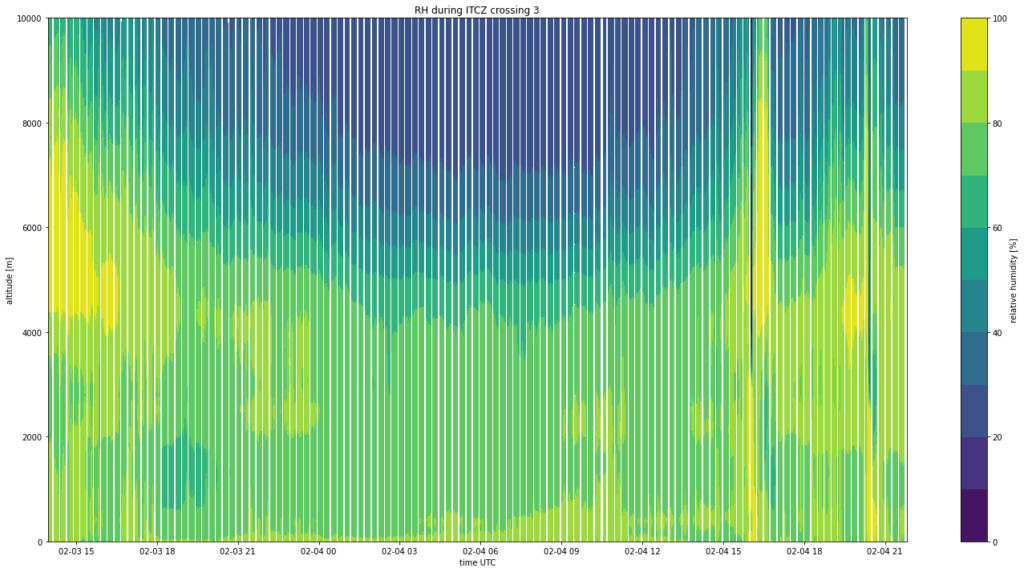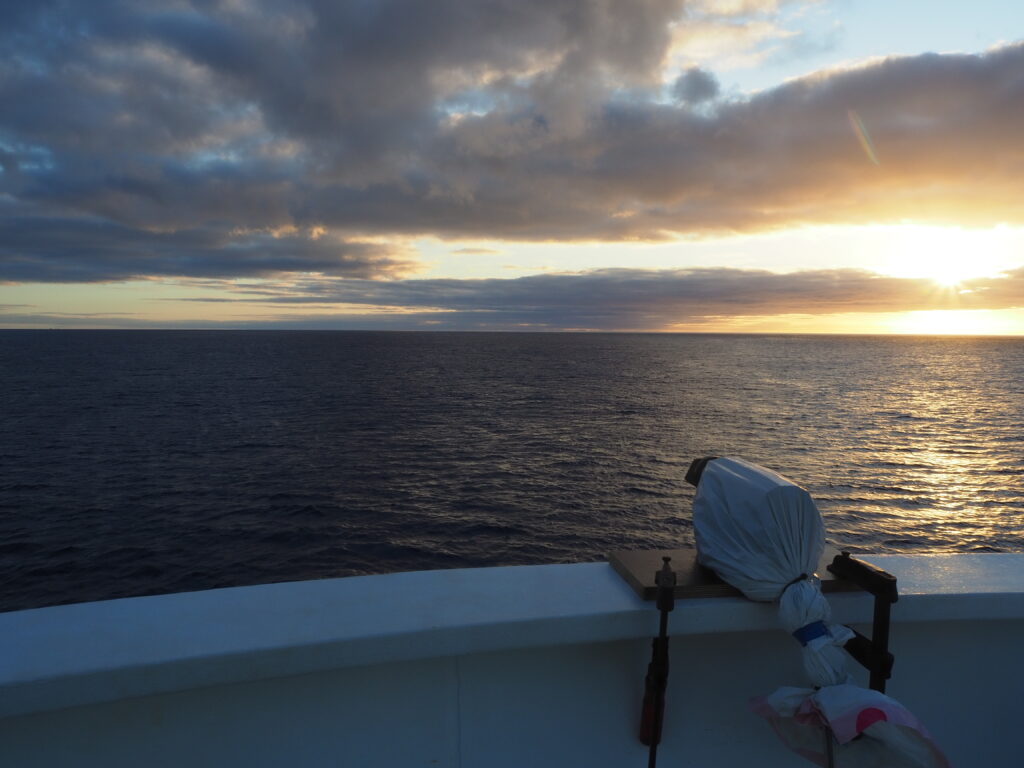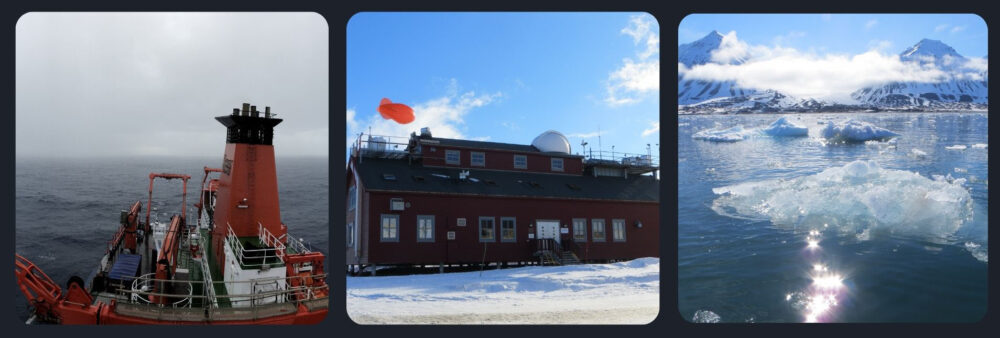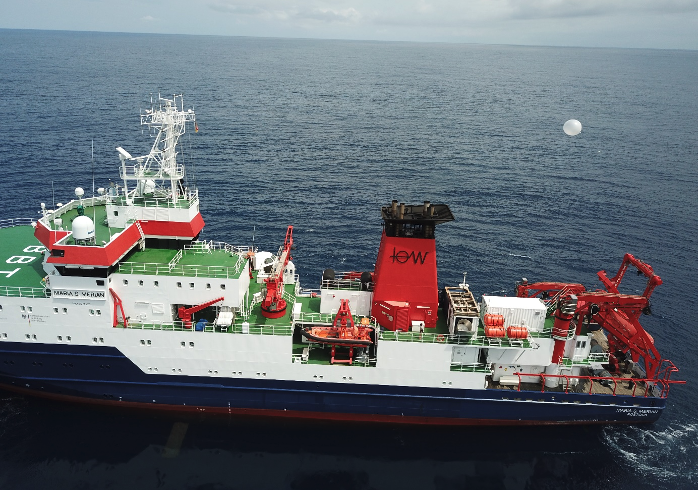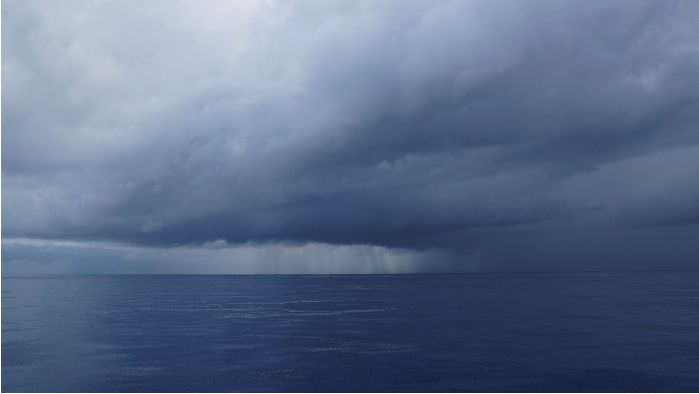by Daria Paul and Lennéa Hayo
Last week, we left the ITCZ and are now heading straight toward Punta Arenas. The new free time, we, therefore, spend with first data analysis. During the third crossing of the ITCZ we for example experienced and measured a strong doldrum with no wind and very little water vapor content in an otherwise very moist environment.
Apart from the data analysis, we used the last few days for two new projects: we launched three more radiosondes during AEOLUS satellite overpasses to help validate its wind profiles and started a little test series with a KT19. The KT19 is a passive infrared “camera” measuring the sea surface skin temperature to estimate the sea emissivity.
After three weeks alone on the ocean, we saw the first ship on the horizon yesterday since we left the port in Mindelo! As we’re currently approaching the “roaring forties”, we have very rough weather ahead of us the next few days before we cross the “furious fifties” and finally reach the Magellan Strait, where we hopefully have some chances of seeing whales 😊.
